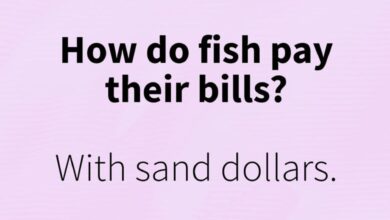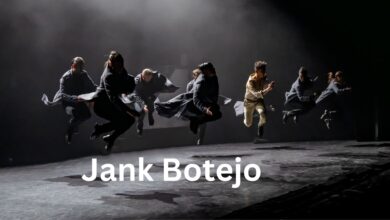The Ultimate Guide to “Yep GIF”: Understanding, Creating, and Using This Popular Reaction

Introduction
Yep gif, or Graphics Interchange Format files, have become one of the most widely used forms of digital communication. Their ability to convey emotions, humor, and reactions in seconds makes them a favorite tool for social media users. Among the myriad GIFs available, one type has gained popularity: the “Yep GIF.” This simple, impactful reaction GIF expresses agreement, acknowledgment, or sometimes even sarcasm. In this guide, we will explore the “Yep GIF” in depth—what it is, its psychology, how to create your own, and the best ways to use it across different platforms.
What Is a “Yep GIF”?
A “Yep GIF” is a reaction GIF typically used to convey agreement, affirmation, or sometimes a passive acknowledgment of something said or done. It’s often characterized by a minimal, straightforward response, either in a person’s facial expression, a gesture, or a word like “Yep” or “Yup.” These GIFs are widely shared across online platforms such as Reddit, Twitter, Facebook and messaging apps like WhatsApp and Slack.
What makes a “Yep GIF” stand out is its versatility. It can be used in various contexts, from humorous exchanges to serious conversations. For example, in a casual conversation, someone might share a meme or an idea, and a simple “Yep GIF” can agree without requiring additional words. In other contexts, a “Yep GIF” can be used sarcastically to convey indifference or an understated reaction to something that may require more enthusiasm. This dual-purpose nature makes the “Yep GIF” a valuable tool for nuanced digital communication.
Examples of popular “Yep GIFs” include clips from TV shows, movies, or famous personalities who give a slight nod or a dry “Yep.” These relatable reactions often convey just the right emotion, making them essential to online dialogue. GIFs like these are effective because they tap into the power of non-verbal communication, which is often more potent than words.
The Psychology Behind the “Yep GIF”
GIFs, in general, have a psychological impact on communication. They offer a quick, easily digestible way of expressing emotions and can convey complex ideas quickly. The “Yep GIF” resonates with audiences because of its simplicity and emotional clarity. When someone uses a “Yep GIF,” they are essentially sending a straightforward and unequivocal message: they agree, understand, or acknowledge what was said or done.
The appeal of the “Yep GIF” lies in its ability to match various tones. Sometimes, it can be sincere and affirming, such as in a discussion where someone agrees with an idea or statement. In other instances, it can be used ironically, providing a dry or sarcastic response to something that doesn’t warrant an enthusiastic reaction. This flexibility allows the “Yep GIF” to serve as both a tool for positive reinforcement and a subtle form of humor.
Psychologically, GIFs like “Yep” can also make communication more human. Text-based conversations can make it hard to convey tone or emotion effectively. A “Yep GIF” fills this gap by providing visual context that words alone can’t always capture. It’s no wonder that GIFs have become so central to online communication, as they allow users to express complex emotions with ease and creativity. The emotional depth of a simple “Yep” can be understood by almost anyone, regardless of language or background, making it an essential part of the global digital language.
How to Create a “Yep GIF”

Creating your own “Yep GIF” is easier than it might seem. Several tools and apps, like Giphy, Tenor, and Imgur, allow you to create custom GIFs from videos or images. Here’s a step-by-step guide on how to make a “Yep GIF”:
- Choose a Source: The first step is to select the video or image from which you want to create your “Yep GIF.” It could be a clip of a popular TV show, a movie scene, or even a personal video of yourself saying, “Yep.” Make sure the clip is short and captures the essence of the reaction.
- Use a GIF Creation Tool: Once you have the source, head to a platform like Giphy or Tenor, where you can upload your video and trim it to the desired length (usually a few seconds). Most tools offer a cropping tool to help you focus on when the “Yep” is spoken or implied.
- Add Text and Effects (Optional): Many users like personalizing their “Yep GIFs” by adding text overlays or other visual effects. For instance, you could add the word “Yep” in bold letters or make the text pop in a fun font. Some tools also allow you to add filters or change the “Yep GIF” speed to make it more dynamic.
- Export and Share: Once your “Yep GIF” is ready, you can export it to your device or share it directly on social media. Platforms like Giphy and Tenor make it easy to share your “Yep GIF” directly on messaging apps and social media platforms like Twitter, Instagram, and Facebook.
Following these simple steps, you can create a custom “Yep GIF” that fits your style and adds a personal touch to your conversations. Whether you’re using it for humor, affirmation, or sarcasm, your custom “Yep GIF” can bring a new level of engagement to your online interactions.
Best Ways to Use a “Yep GIF”
The “Yep GIF” is versatile, and its usage depends heavily on context. Below are some of the best ways to use this reaction GIF:
- Casual Conversations: In a casual conversation, the “Yep GIF” is an excellent way to show that you are paying attention or agreeing with someone. For instance, if a friend shares a funny story or idea, responding with a “Yep GIF” can acknowledge their statement without needing to type out a response.
- Group Chats: In fast-paced group chats, the “Yep GIF” is a quick way to participate without breaking the flow. It helps acknowledge a message without cluttering the conversation with unnecessary words.
- Social Media Posts: When commenting on social media posts, a “Yep GIF” can be used to react to memes of tenants or opinions shared by others. It’s a great way to show your approval, and it can also be used to respond to something requiring little further explanation.
- Professional Settings: Though typically casual, the “Yep GIF” can also be used in professional contexts. It can be used in workplace messaging apps like Slack to affirm understanding or agreement. However, it’s essential to use discretion and ensure that using a GIF doesn’t appear unprofessional, especially in formal communications.
- Sarcasm and Humor: A “Yep GIF” is sometimes used ironically or sarcastically. In these cases, the GIF is a humorous way to downplay something overly enthusiastic or dramatic. It’s the perfect response to something that doesn’t doesn’t need a lengthy reply.
Ultimately, the best way to use a “Yep GIF” is to let the context guide your choice. Whether you’re agreeing with a friend or just adding humor to a conversation, the “Yep GIF” can be a universal reaction.
Conclusion
The “Yep GIF” has solidified its place in digital communication, offering a simple yet powerful way to express agreement, understanding, or even sarcasm. Its versatility and ease of use make it an indispensable part of internet culture. Whether creating your own GIF or sharing a popular one, understanding the context and psychology behind this reaction can enhance your online conversations.
As we’ve explored in this guide, creating and using “Yep GIFs” is an easy and fun way to engage with others. With just a few simple steps, you can add this expressive tool to your digital toolkit and use it to its full potential. So, next time you’re texting or posting online, consider adding a “Yep GIF” to your reply—it’s the perfect way to keep the conversation going.
FAQs
- What does the “Yep GIF” typically mean?
- The “Yep GIF” expresses agreement, acknowledgment, or sometimes sarcasm, depending on the context.
- Can I create a “Yep GIF” from my video?
- You can create a “Yep GIF” using videos or images from your collection using tools like Giphy or Tenor.
- Is the “Yep GIF” always used to agree?
- While it is often used to show agreement, it can also be used sarcastically or humorously, depending on the context.
- How do I share a “Yep GIF” on social media?
- You can share your “Yep GIF” directly on social media platforms like Twitter, Facebook, and Instagram using GIF-sharing platforms like Giphy or Tenor.
- Why are reaction GIFs like “Yep” so popular?
- Reaction GIFs, like ” Yep,” are popular because they convey emotions and reactions quickly and effectively, adding personality to digital conversations.
You May Also Read: https://ventsbuz.com/vyvymanga/





